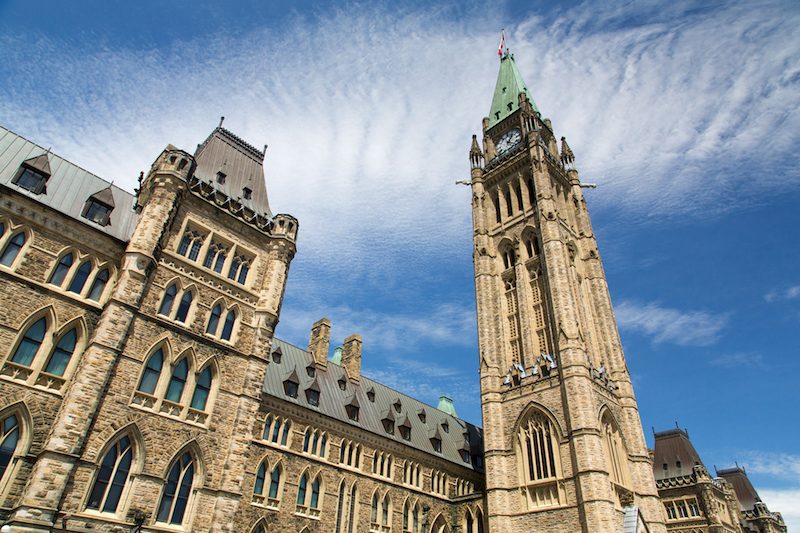
Countries like Australia and Canada offer models for reining in delegation of lawmaking authority to agencies.
The Trump Administration’s deregulation efforts have so far made some progress in stemming the growth of federal rulemaking. New analysis from the Heritage Foundation finds that the Office of Information and Regulatory Affairs, which conducts reviews of agency analyses of significant new regulations, has carried out the fewest reviews of new rules since record-keeping began in the 1990s.
The President’s public utterances about these efforts have tended to focus on deregulation as a macroeconomic policy. For instance, his message to the National Association of Manufacturers in late September is typical of how he and the Administration have characterized this agenda. He outlined his plan “to remove job-killing regulations that sap the energy, creativity, and dynamism from our country” and to achieve instead a “beautiful, fast, efficient regulation that works.”
Although a “beautiful” regulatory system may be a desirable goal, it is not just the economic costs of regulations and executive rules that ought to be in the Administration’s focus. The costs to constitutional legitimacy matter too. The White House’s deregulatory agenda should be about more than simply dollars and cents; it should be about ultimately strengthening congressional responsibility for making law.
The principal objection to the growing regulatory state is that it undermines the role of the legislative branch relative to the executive, and in turn it erodes the structure of government embodied in the U.S. Constitution. The U.S. Constitution places responsibility for rulemaking and lawmaking clearly with the Congress. The legislative branch is to pass laws and the President and his appointees are to implement and enforce them. But that is not how the system of government has evolved in the United States. The combination of executive exuberance and congressional passivity is largely to blame for this transformation.
Many of the laws passed by Congress delegate authority to departments and agencies to produce rules and regulations to administer these statutes. These secondary or accompanying policies are sometimes called “delegated legislation,” because they find their authority in “primary legislation” and carry the full force of the law.
The Dodd-Frank Wall Street Reform and Consumer Protection Act is one example. The 2,300-page statute covers a far-reaching set of issues such as financial instruments, executive compensation, mortgage lending, and government oversight, and established three new agencies, including the Consumer Financial Protection Bureau. Yet as comprehensive as the statute is in its scope, it is light on details and federal agencies were thus granted considerable discretion to promulgate on their own the delegated legislation to accompany the statute. Vague wording and contestable language only serve to expand the scope for executive overreach.
This is not just a recent phenomenon. Historic statutes also remain the source of significant executive action, including on matters clearly unanticipated by legislators at the time. The Clean Air Act was passed in 1970 with considerable scope for accompanying executive rulemaking. Federal officials have taken advantage by producing an average of 350 pages of regulations every year since its enactment.
The upshot is that, in 2016, Congress passed 211 laws and the federal government issued 3,583 rules and regulations. This 18-to-1 ratio is a sign of a democratic deficit that should transcend ideological or partisan diving lines. This gap between primary and secondary legislation, in fact, ought to concern anyone interested in the Constitution’s structure. Congress’s constitutional role in lawmaking has weakened. As Christopher DeMuth, with the Hudson Institute, has put it: “In these cases, the agencies make the hard policy choices. They are the lawmakers.”
What steps, then, can be taken to ensure that the legislative branch regains its constitutional role as the principal source of rules and laws?
One option would be to draw on the experience of nations with a Westminster or parliamentary system of government that have established legislative committees that are responsible for reviewing and scrutinizing regulations and executive rulemaking.
The systems in Australia, Canada, New Zealand, and the United Kingdom offer a useful model for how the legislative branch can play a key role in reviewing and scrutinizing regulations and executive rulemaking. The legislative review process in these countries helps to ensure that the executive bodies of government comply with the law and do not use delegated authorities in ways that reach far beyond legislative intent or scope.
Each of these countries has a permanent legislative committee to oversee and review delegated legislation. None is perfect. Regulations and executive rulemaking have certainly not disappeared. But these committees at least in theory can serve to enhance public transparency and executive accountability. The experience in these other countries offers strengths and weaknesses that can inform U.S. lawmakers on how best to strengthen the role of congressional oversight over executive action.
It must be recognized that the inherent differences between the “separation of powers” in the United States and the “fusion of powers” in these parliamentary countries would invariably require a “made-in-the-U.S.” solution. But there is still value in understanding the lessons from other nations.
There are five specific lessons that U.S. lawmakers can learn from these Anglosphere experiences. First, parliamentary systems show that the legislature’s review process should be depoliticized to the extent possible. Second, legislative review committees must be properly resourced and staffed. Third, all correspondence between the committee, government departments, and agencies about problematic rules and regulations must be transparent and tied to clear and reasonable timelines. Fourth, primary legislation should only delegate lawmaking authorities where appropriate and with clear definitions and scope. And, finally, the threat of disallowance by the legislature must be practical and real.
Short-term efforts to slow the growth of new rules and regulations seem to be working in the opening months of the Trump Administration. But long-term progress will require institutional reform. Drawing from the experience of countries with legislative committees responsible for reviewing and scrutinizing regulations and executive rulemaking could be a truly beautiful step in the right direction.




